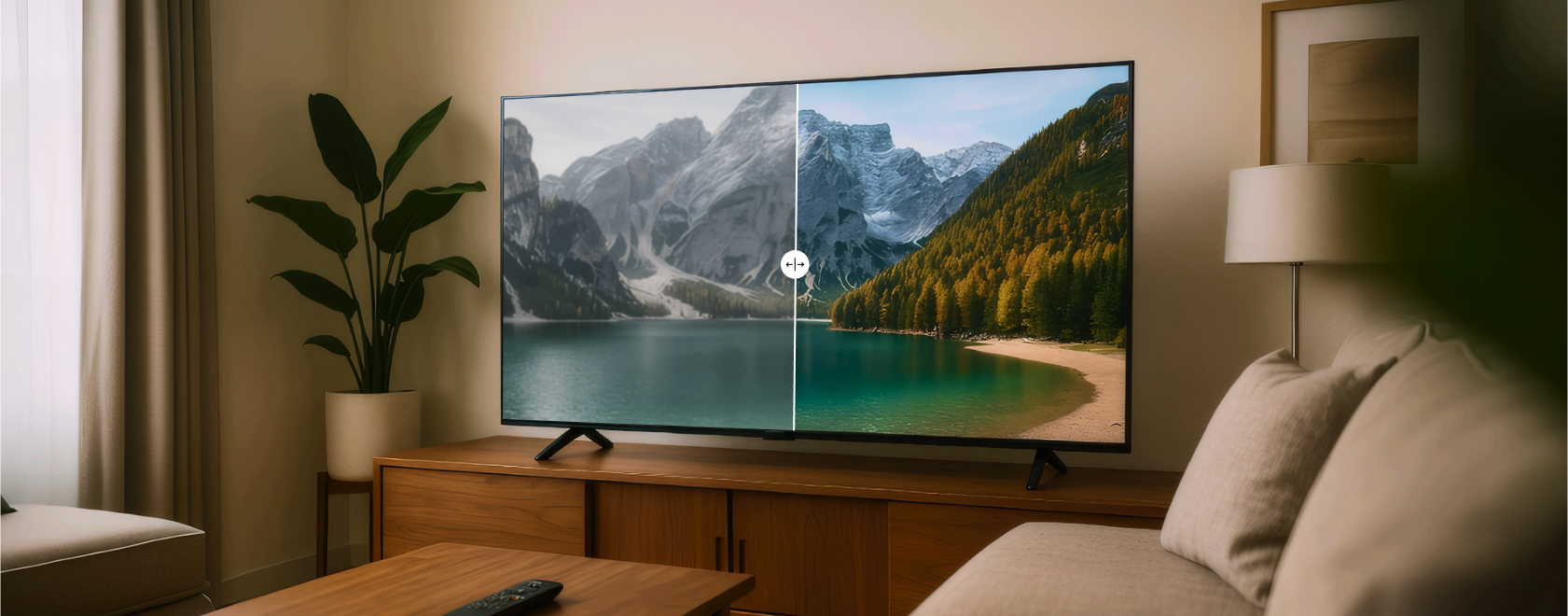Many IPTV users eventually face a situation where the image on screen is disappointing — it may look blurry, break up into pixels, or freeze during the most dramatic scene of a movie. A natural question arises: does this mean it’s time to replace the TV or buy a new set-top box? Fortunately, in most cases, you can improve IPTV picture quality significantly without spending money on new devices. Below are five proven methods to achieve a better image on IPTV channels and enhance your overall viewing.
1. Use a Wired Connection — Stability Comes First
Wi-Fi is convenient but not always reliable, especially if the signal has to pass through several walls or your router is overloaded. IPTV streaming requires consistent speed and minimal delays. That’s why the first step is to connect your media player or Smart TV directly to the internet with an Ethernet cable. This eliminates interference, creates a stable IPTV connection, and prevents video from breaking up when switching channels.
If laying cable isn’t possible, consider Powerline adapters. They transmit internet signals through your home’s electrical wiring and often provide a more stable internet link than Wi-Fi, ensuring smooth playback on IPTV services.
2. Choose an Optimized Player or App
Picture quality depends not only on your connection but also on the application you use to watch IPTV. Some players fail to handle streams properly, lack buffering options, or cannot adapt the quality automatically. Try alternative apps like TiviMate, OTT Navigator, IPTV Smarters, or Perfect Player. Many of these provide features such as custom buffering, decoder selection, and adaptive streaming.
Spend a few minutes fine-tuning the app: choose the right video engine (for example, ExoPlayer or Hardware Decoder), enable auto-quality adjustment, and set buffer size according to your network conditions. Proper configuration often eliminates buffering issues in IPTV.
3. Adjust TV Image Settings
Even the best IPTV player won’t help if your television display mode is poorly configured. Many TVs come preset in power-saving or overly bright modes, which can make the picture flat or washed out.
Go to your TV’s image settings and switch to a profile like Cinema, Neutral, or Custom. Adjust sharpness, contrast, and color temperature manually if necessary. This step is especially important for budget models, where factory settings are rarely optimal. Correct settings can greatly improve video clarity and provide a richer viewing experience.
4. Check Playlist Quality
Sometimes poor visuals aren’t caused by your device but by the source itself. If you’re using third-party IPTV playlists, confirm that the streams are provided in HD or Full HD, not just SD. Also, pay attention to bitrate — higher bitrate means sharper streaming quality, though it demands more bandwidth.
Reliable IPTV providers typically offer HD IPTV channel quality, adaptive streaming, and stable sources with multiple options. If your current playlist often drops resolution or buffers excessively, switching providers can dramatically enhance your IPTV viewing experience.
5. Keep Firmware and Apps Updated
One of the most overlooked steps is updating software. Manufacturers release firmware updates and new app versions to fix bugs, improve compatibility, and optimize video processing. Check if updates are available for your set-top box, TV, or IPTV application.
This is especially important for Android TV and Google TV, where updates may require user confirmation before installation. New versions often improve codecs, decoders, and overall uninterrupted viewing quality.
Poor IPTV image quality doesn’t always mean your device is outdated. In most cases, optimizing your network, updating software, and fine-tuning settings is enough to fix the problem. IPTV is flexible, and with the right adjustments, you can enjoy crisp, stable streams even on budget equipment. Try these stable IPTV connection tips and your viewing will feel far more enjoyable — all without buying new gear.
